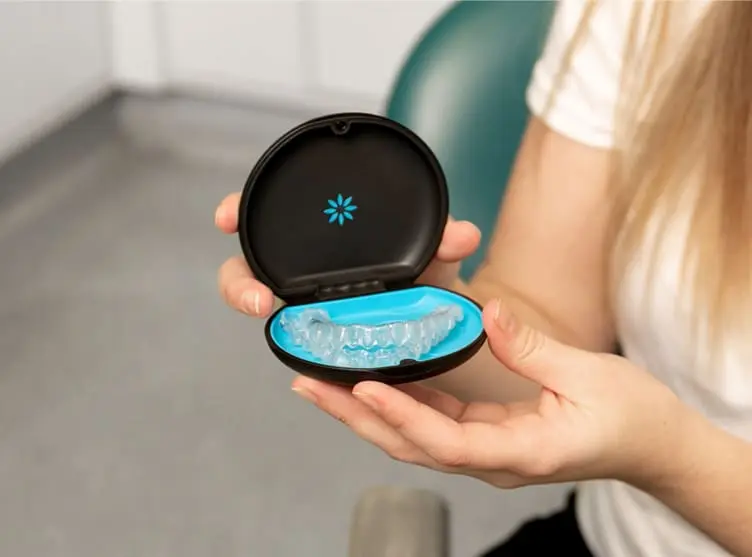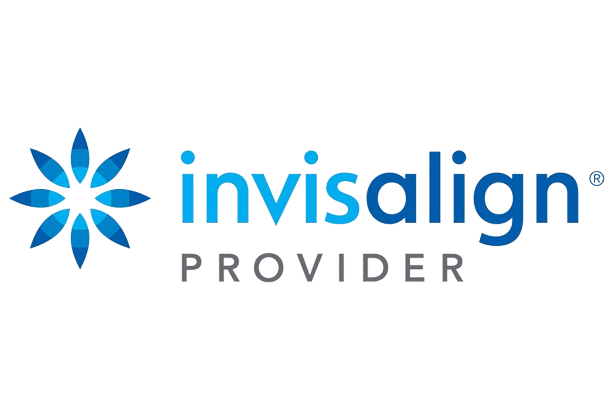The decision between traditional braces and Invisalign for teeth straightening can be difficult. Selecting the best course of action relies on personal preferences, financial constraints, and lifestyle, as each alternative offers distinct advantages. This thorough guide will assist you in selecting the one that might be most appropriate for your smile journey.
1. Aesthetic Appeal
Braces: Conventional braces consist of wire-connected metal brackets that are affixed to the teeth. They can occasionally be painful, particularly when eating, and are quite noticeable. Although they are less obvious, clear or ceramic braces still don’t have the same almost undetectable appearance as Invisalign.
Invisalign: Almost undetectable when worn, Invisalign aligners are composed of transparent plastic. Adults and teenagers who want a less conspicuous appearance find them appealing. Additionally, these aligners are manufactured to order to fit tightly, providing a discrete method of teeth straightening.
Winner: Invisalign, particularly for people who value appearance and a more understated approach.
2. Treatment Duration
Braces: Depending on the complexity of the situation, traditional braces usually take 18 months to 3 years to produce the desired results. Since braces are locked in place, they can reposition teeth continuously, which could shorten the amount of time needed to cure more severe misalignments.
Invisalign: Depending on the circumstances, Invisalign treatment might last anywhere from 12 to 18 months. However, if aligners are not worn consistently (20–22 hours per day), this treatment period may be prolonged.
Winner: Invisalign may be quicker for small modifications, but braces may provide a more consistent treatment length for difficult cases.
3. Comfort and Convenience
Braces: Since braces are attached to your teeth, they can cause initial discomfort, especially when tightened. They may also cause minor irritation on the inner cheeks and lips. Brushing and flossing can be more challenging with braces, and some foods like sticky candies, popcorn, and hard items should be avoided.
Invisalign: These are generally more comfortable as they lack sharp edges and metal parts. Since they are removable, maintaining good oral hygiene is simpler, and there are no food restrictions. However, Invisalign aligners must be worn diligently, except when eating, drinking (except water), or cleaning the teeth.
Winner: Invisalign is generally considered more comfortable and convenient, thanks to its removable design.

4. Effectiveness for Different Orthodontic Issues
Braces: Braces are incredibly effective for all types of orthodontic issues, from minor alignment problems to severe malocclusions. They provide orthodontists with precise control over each tooth’s movement, making them the preferred option for complex cases.
Invisalign: Invisalign has advanced significantly and can treat various issues, including overbite, underbite, crowding, and spacing. However, it might not be the best solution for extremely complex cases or severe alignment issues.
Winner: Braces are more versatile and effective for complex alignment issues, while Invisalign is a solid choice for mild to moderate cases.
5. Cost and Insurance
Braces: The cost of braces varies based on the type of braces, the duration of treatment, and the complexity of the case. Metal braces tend to be the most affordable option, while ceramic braces can be more expensive. Some dental insurance plans may cover part of the cost of traditional braces, making them a more budget-friendly option for some.
Invisalign: Can be slightly more expensive than traditional braces, though the final cost depends on the complexity of the treatment and the number of aligners needed. Some insurance providers cover part of Invisalign’s cost, but out-of-pocket expenses might be higher.
Winner: Braces tend to be the more cost-effective option for extensive treatments.
6. Frequency of Dental Visits
Braces: With braces, you’ll need to visit your orthodontist every 4-8 weeks for adjustments and check-ups. These appointments are essential for monitoring progress and making necessary adjustments to keep treatment on track.
Invisalign: Invisalign generally requires fewer dental visits, with appointments scheduled every 6-8 weeks. Instead of manual adjustments, you’ll simply switch to a new set of aligners every 1-2 weeks at home, making it more convenient for busy individuals.
Winner: Invisalign is more convenient for those who want fewer orthodontic appointments.
Conclusion: Which One is Better for You?
Choosing between Invisalign and braces depends on various factors, including your lifestyle, comfort level, and budget. Here’s a brief comparison to guide your decision:
- Aesthetics: Invisalign wins for a more discreet look.
- Treatment Duration: Braces might be faster for complex cases, while Invisalign may speed up minor corrections.
- Comfort and Convenience: Invisalign wins for comfort and ease of use.
- Effectiveness for Complex Issues: Braces are more effective for complex cases.
- Cost: Braces are generally more affordable.
- Dental Visits: Invisalign requires fewer visits.
Ultimately, the best choice is one that aligns with your orthodontic needs and lifestyle. Consulting an orthodontist will give you a personalized recommendation, ensuring that you achieve a confident, straight smile with the method best suited to you.



